Siem Reap’s Difference Makers
Who are the difference makers in Cambodia?
I’ll give you a hint: It isn’t us.
Voluntourism
Alissa and I have been in Cambodia for the last two weeks, spending a good amount of time with a local organization called ODA (Opportunities of Development through Art). To be clear, we didn’t come here to volunteer. My brother, Andy, had spent time volunteering with ODA on two previous occasions, and we were invited by them to visit and see just what they were about. Many backpackers include some sort of “voluntourism” on their trips these days, and while Alissa and I have a desire to help people, I don’t feel short-term volunteer stints, especially ones connected to big travel companies, are actually doing much good. Places like Cambodia don’t need foreigners stopping by with a “I will fix this place in one week” attitude. They need locals on the ground with the proper training and motivation to change their country. We came to ODA to see just what an organization “doing it right” looks like.
This post is about our experience with a wonderful organization. If you like it, share it, or comment below and let us know!
What is ODA?
When arriving at ODA, it is a bit confusing on what exactly they do. They appear to be part Homestay, part English School, but in reality they are much more than both of those things. The best way to describe ODA is simple “a big family”. There are over 30 children living at ODA now, all came here for a different reason, but once they get there they join the 9% of Cambodian children who receive a secondary education. They also receive three meals a day, a luxury in a country where so many children spend the day working and hungry.
Leng, the Father of ODA
We’ve all met people like Leng before. Those individuals in the world that decide to completely dedicate their lives to helping others less fortunate. But it wasn’t that part about Leng that amazed me, it was how he got to where he is now that amazed me. People that dedicate their lives to a cause aren’t necessarily rare(thankfully), but people who got there with the childhood that Leng experienced are extremely rare.
Leng was six years old and living with his mother, father, and sister when Pol Pot’s Khmer Rouge came to power in 1976. Four years later, his mother and sister had disappeared, and his father had been murdered by the regime. Starving and scared, Leng had fled out of the country with thousands of other Cambodians. Four years and over two million murders later, a ten-year-old Leng slowly made his way back into the country that was now foreign to him. Now apparently on his own, he had everything in the world stacked against him. His story was ready to end in tragedy as “just another victim of the Khmer Rouge”.
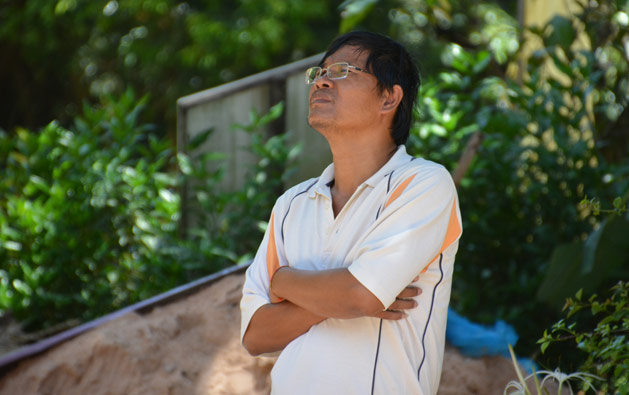
Leng looks on during roof maintenance at ODA
Leng didn’t know it at the time, but his uncle in Phnom Penh, the only person left who knew Leng, had decided to go looking for him. The one in a million search worked. Not only did Leng’s uncle find him, he raised him as his own and did the single-most important thing in Leng’s life: He taught him the importance of a good education. Leng eventually graduated from college with a degree in Fine Arts headed north to the war-torn town of Siem Reap, and began teaching art to street kids for free and doing anything he could to help them survive.
Leng’s group of students began to grow, and he soon realized that the children he was teaching did not have homes, family or access to food. He decided to take the boys under his wing, and they began finding places to live around the city, constantly moving from place to place, always painting. In 2003, Leng began building a permanent house near the ancient temple city of Ankor Wat. ODA was officially born that year, continuing Leng’s mission to encourage and teach the children the confidence and skills to help themselves in life. ODA does receive donations, but Leng has done an amazing job of creating income for the children from the paintings that sell all over the world.
A typical day at ODA
It is really fun to watch the 30+ children that now live at ODA interact with each other during the day. They are the most selfless, patient, and gracious children we’ve ever met. Nobody whines, nobody complains, they all look out for each other, and everybody helps out with day to day chores. Watching lunch at ODA is an event in itself. Three children are pumping water from the well, four are preparing the meal, two of the older girls are watching the young children, one of the oldest boys is giving a tour to some visitors in the art gallery, and here we are just sitting around in awe.
When I mentioned that Alissa and I didn’t come here to volunteer, this is why. Places like ODA don’t need foreigners like us coming here trying to save the world. Leng has worked extremely hard over the past 10 years to make ODA a self-reliant home, and it is important to the children’s upbringing that they learn not to rely on foreigners. The need for volunteers here is in teaching the children English and advanced topics such as computers and engineering. Being here for two weeks doesn’t give us enough time to learn the curriculum enough to help teach. Short term volunteers that come and go, each with their own teaching style and topics can cause more harm than good. ODA does an amazing job selecting the volunteers it accepts so that the children here have the best possible education. So instead of volunteering, we came here with my brother during one of their school breaks, and we will be taking the entire group down to Sihanoukville for a five-day beach trip. More details on that trip coming later!
The artists of ODA
From the beginning, Leng has always put art as the center of the children’s education. Art has given these children not only a valuable skill, but a source of income. Of all the paintings that get sold at ODA, 90% goes to providing ODA food and supplies, and 10% goes into the artist’s college fund. With help from foreigners, ODA now has art shows annually in countries all over the world, giving the children even more opportunities to grow their college funds. Leng also has a collective college fund built that is utilized by all the children, ensuring that students without a gift for painting can also attend university.
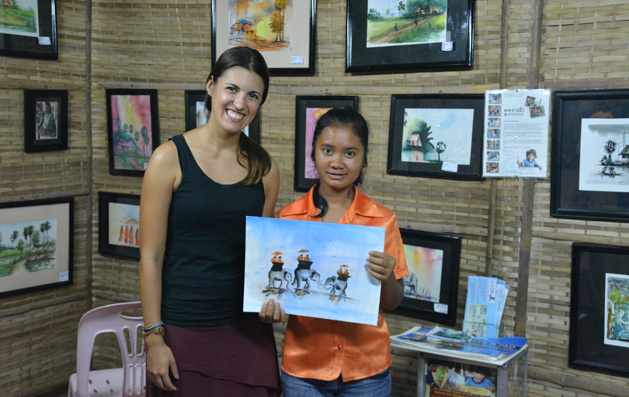
Alissa with the young artist of one of the paintings we bought.
The children only paint if and when they want to, and the majority choose to do so with most of their free time. Not once have I ever seen any of the children “just sitting around”. They are constantly keeping busy with chores, school, and painting. Three of the older boys head to the temples a few days a week and paint there to help promote visitors to stop by the ODA gallery on their way back to the city. It truly is a great program here and has turned street kids into artists working to pay for their higher education.
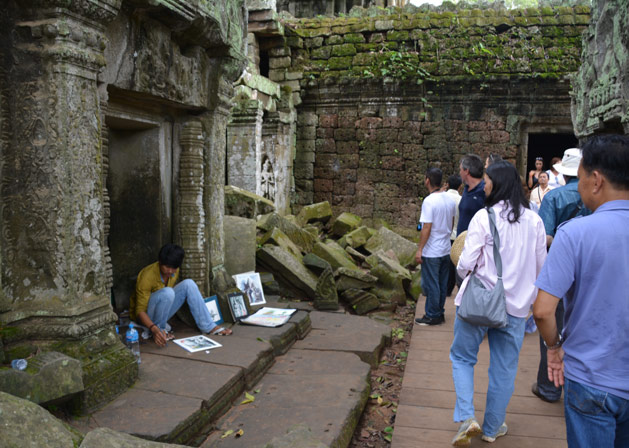
An older ODA boy paints at one of Siem Reap’s ancient temples, earning money for his college education.
We are spending the majority of our time just speaking with the children here, especially the older children, helping them improve their conversational English. My favorite topic is chatting with them about their future plans. Two of the boys are set to start degrees in engineering at the local university, many of the girls are planning to attend nursing school, and much to my delight, one of boys tells me he is possibly interested in graphic design, something I know a lot about. I decide to bring my Macbook the next day and give him a brief overview of what a graphic design career would involve. He is thrilled to see Adobe Photoshop and its abilities, and I know I have taken his spark of interest and turned it into a flame. On one of our bus rides, I also asked the 11-year-old sitting next to me what he wants to be when he gets older. His answer: Computer Programmer. I know it’s not good to pick favorites here, but how can he not be my favorite with an answer like that!
Expanding ODA
In the last few years, Leng expand ODA to not only be a home for disadvantaged children, but an organization that now runs six free schools in nearby villages that now serve over 600 children. The schools that have both free kindergarten classes and free English classes for children. Leng, along with his assistant Shirley (from Australia) took us out on a tour of the one-room school houses that they have had built by donors, and we were completely blown away.
We were invited to sit in the back and watch the class in action. Leng has hired local Khmer teachers to teach the students. This allows the teachers to develop a long-term relationship with the students, and is a much better solution than to use foreign volunteers or foreign paid staff. The teachers are actually students themselves, and they receive a salary as well as money for transportation to and from the schools. These schools are not only educating 600+ village kids for free, but they are also providing jobs for locals. We even got to meet the school’s security guard, Kum, who was hired to tend to one of the schools. He is a young man in a wheelchair who lives next door to one of the schools. Formerly unemployed and without a purpose in life, he now has a job and a passion for helping the village children.
Making a difference
After a couple of weeks here, it is apparent to us that this organization is on the right track to give hundreds of children of Siem Reap a future. 50 children have either passed through the family home or are still there, and there are over 600 enrolled in ODA’s village schools. The best part is that all of this work is being done by locals, not voluntourists, and you can see the difference that makes. ODA still receives foreign donations, and at the moment those donations still play a vital part in keeping the village schools open. When talking with Leng and Shirley, you can see their passion for this organization and their goal to make it 100% self-funded. With the help of the older children that they have mentored and the continued growth of their international art galleries there is no doubt in my mind that they will reach that goal. We didn’t come here thinking we could make a difference, and we definitely didn’t make one. The difference makers are already here. We just came to see the amazing ways their changing the world.
How can you help?
I mentioned earlier that the only volunteers that ODA accepts are those people willing to stay a minimum of one month, preferably three months. That is just not a reality for most peoples’ lives. The best way to help organizations like ODA is to donate directly to them. In ODA’s case, they publish a wish-list on their website so you know exactly what they need at the moment and where your money will go. Currently in Cambodia, children are not allowed to attend school unless they wear a uniform, something that the poorest students can’t afford to buy. For example, the current need of ODA is money to purchase uniforms for the children.
Information on donating to ODA: http://www.odaopportunitiescambodia.org/

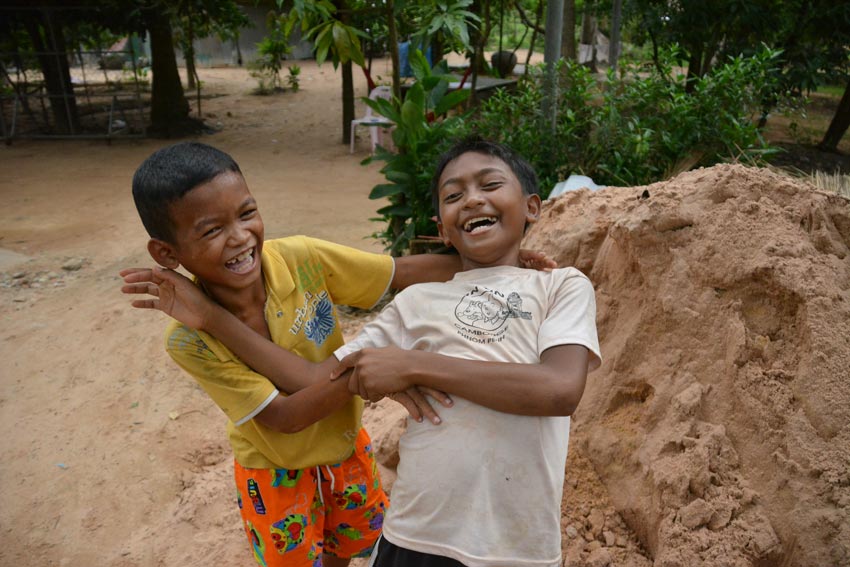
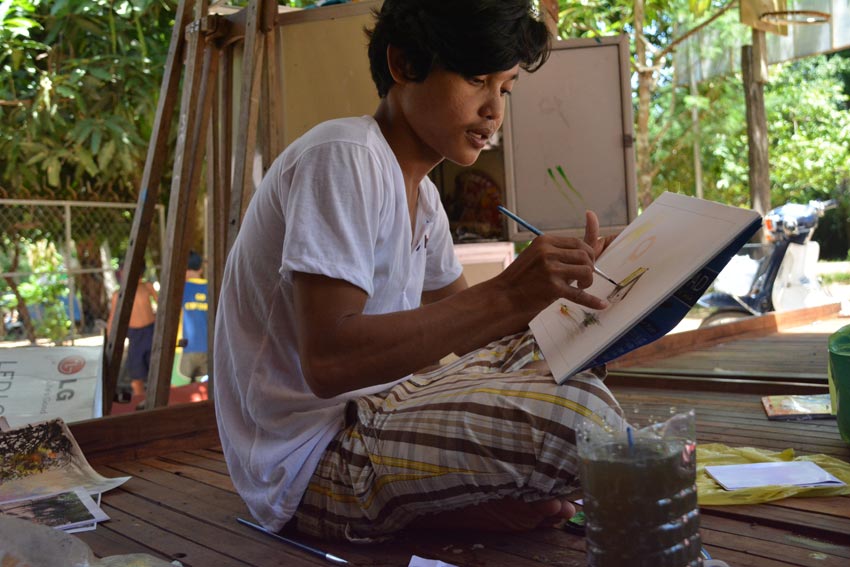
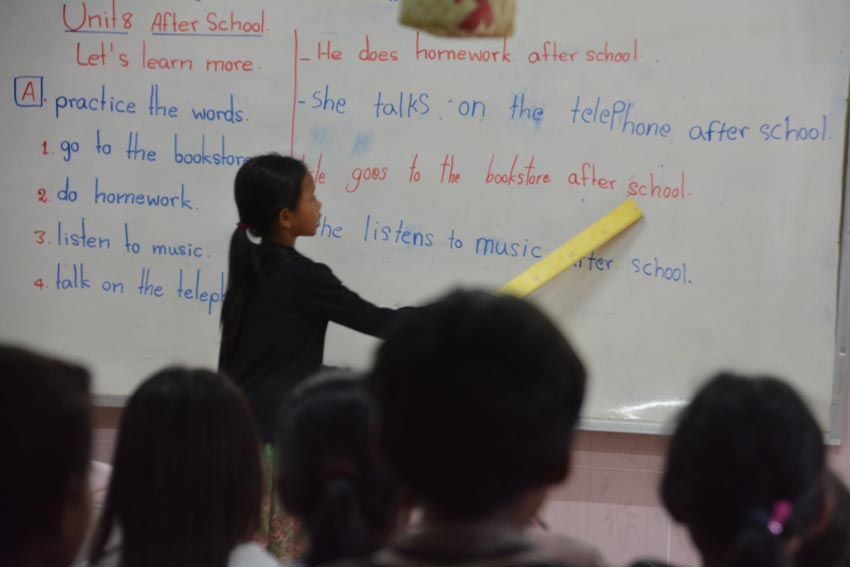
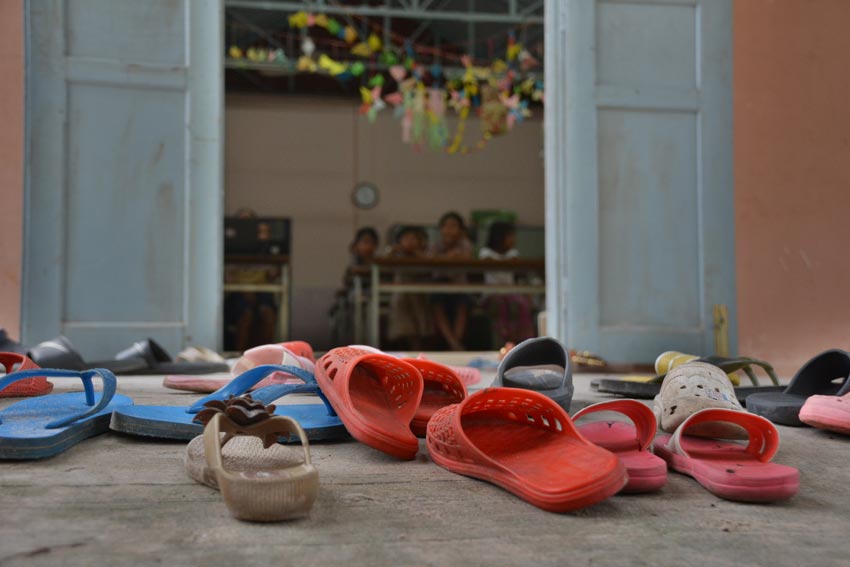
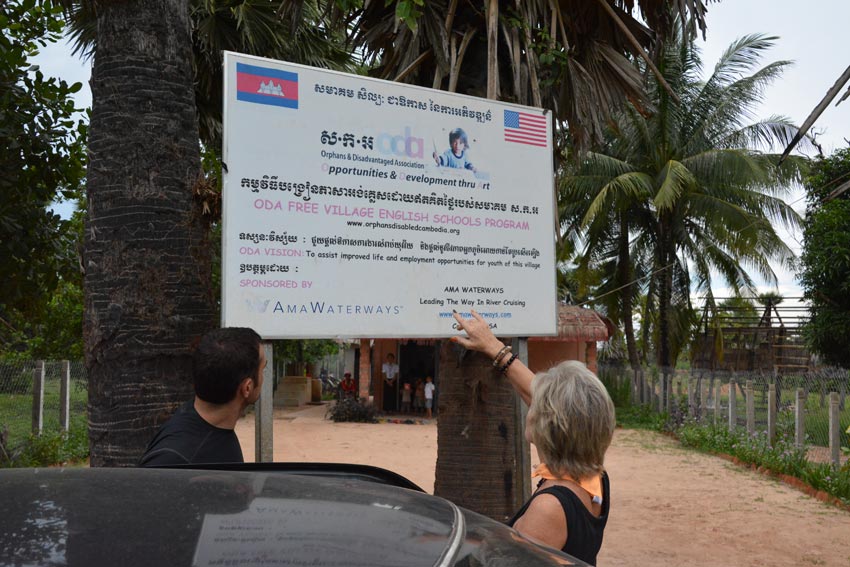
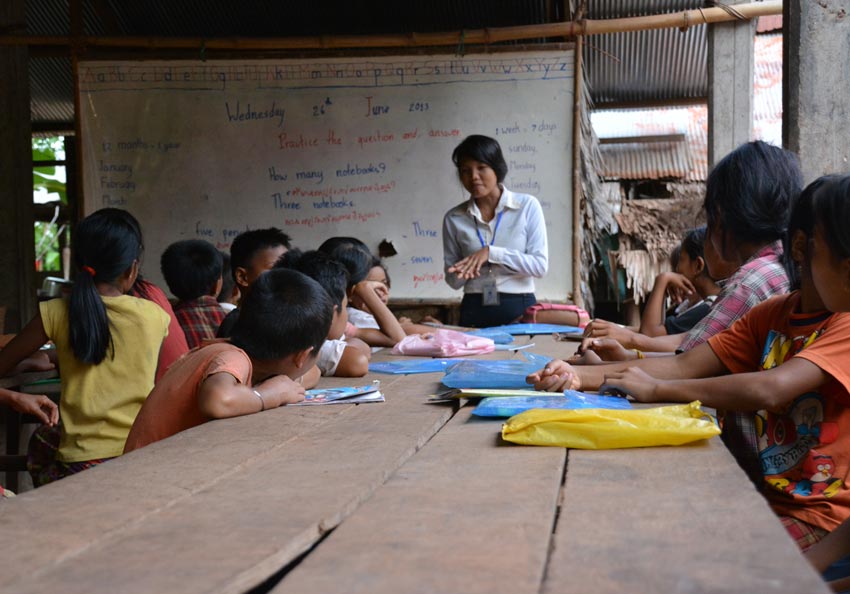
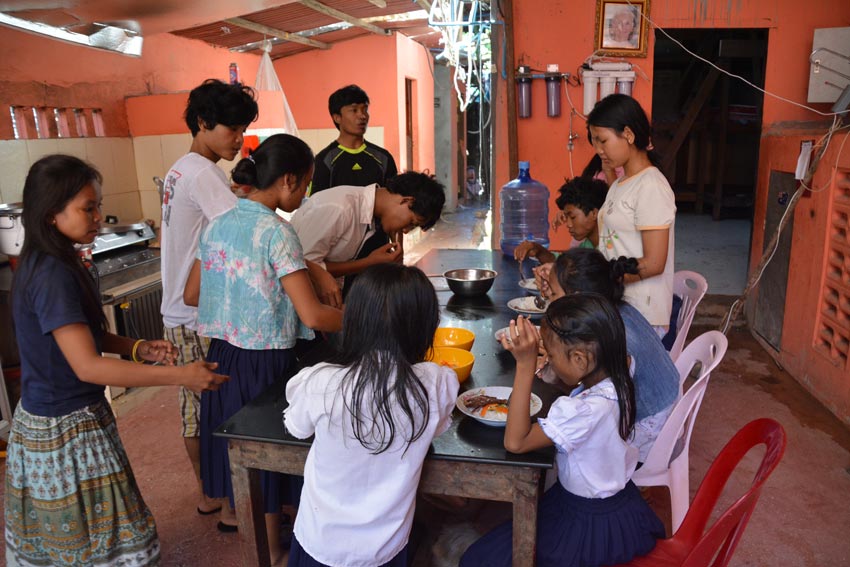
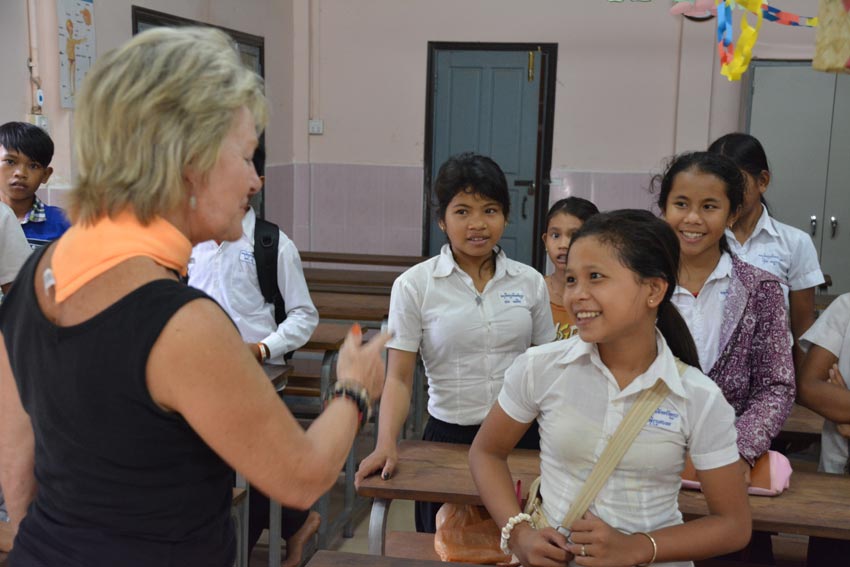
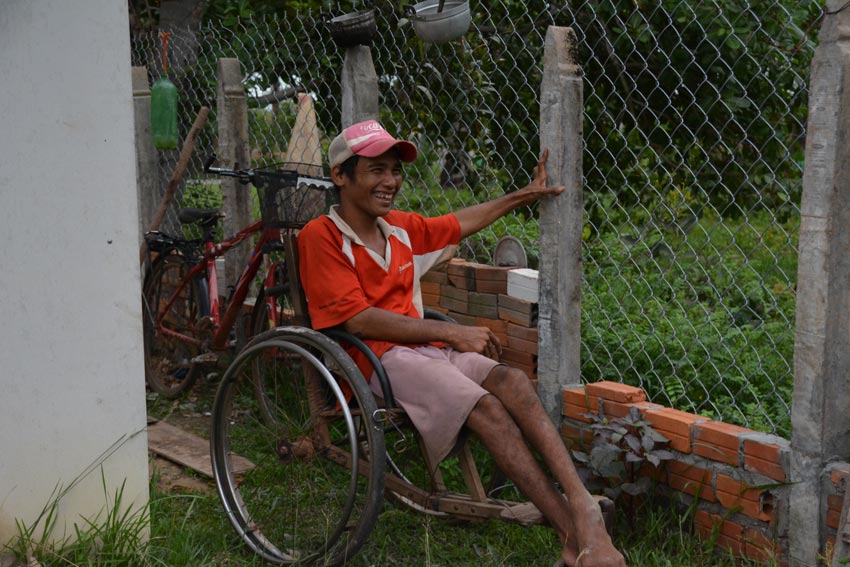
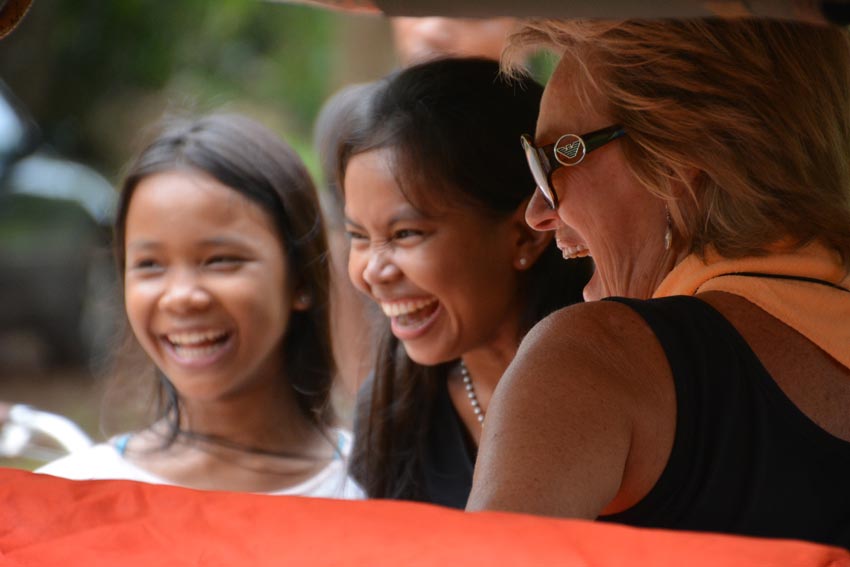
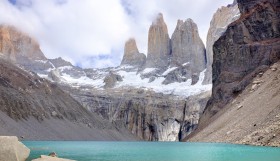

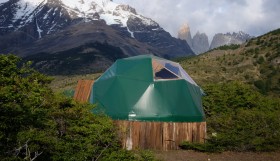
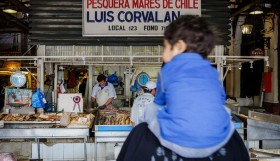












Pingback: This World Rocks | Video: Our time with the amazing kids of ODA in Siem Reap, Cambodia | This World Rocks |